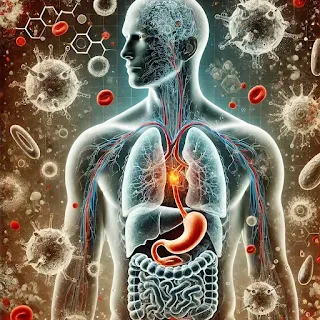Malnutrition, whether due to a lack of essential nutrients or an excess of unhealthy foods, has far-reaching consequences. It affects not only individual health but also social and economic wellbeing, creating a ripple effect across communities.
Health Impacts: Compromised Immunity, Increased Disease Risk
Malnutrition severely compromises the body’s ability to fight infections. A lack of essential nutrients weakens the immune system, making individuals more susceptible to illnesses. For example, deficiencies in vitamins A, C, and zinc can reduce the body's natural defenses, increasing the risk of common infections like colds and flu and more serious illnesses like pneumonia. In children, malnutrition can hinder growth and development, leading to stunted growth, cognitive impairments, and even permanent health complications.
Chronic malnutrition also increases the risk of non-communicable diseases, such as heart disease, diabetes, and hypertension, especially when combined with an unhealthy diet high in sugars, fats, and processed foods. Without proper nutrition, recovery from illnesses can take longer, and some health conditions may become more severe, leading to a cycle of poor health and vulnerability.
Social and Economic Impacts: Reduced Productivity, Educational Setbacks
Malnutrition does not only affect the health of individuals but also has broad social and economic consequences. In terms of productivity, malnourished adults often struggle with lower energy levels, decreased focus, and reduced physical capacity, which can diminish work performance and income. This decline in productivity impacts economies at large, especially in countries where physical labor is a significant part of the workforce.
For children and young adults, malnutrition leads to educational setbacks. Nutrient deficiencies can impair cognitive development and concentration, resulting in poor academic performance. Children who experience chronic malnutrition may face challenges in school, such as difficulties with memory, problem-solving, and learning new information. This not only affects their educational prospects but also limits future career opportunities, perpetuating a cycle of poverty and reduced life quality.
Addressing malnutrition, therefore, requires a comprehensive approach that considers both health and socio-economic aspects to break the cycle and improve individual and community wellbeing.
Related Post









No comments:
Post a Comment